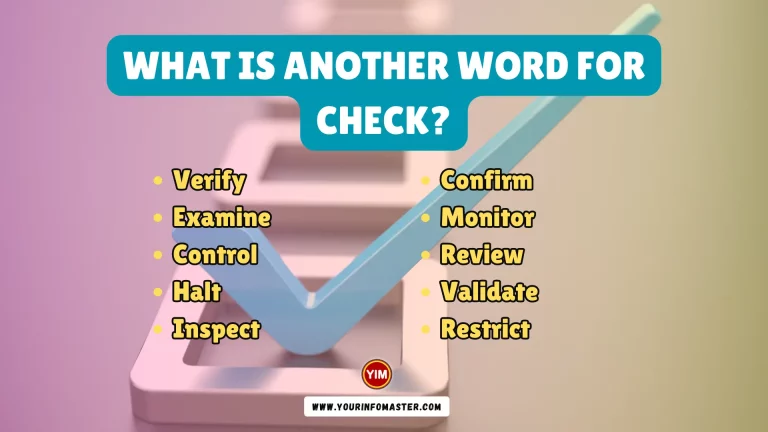In this blog post, we’ll take a deep dive into the captivating realm of diacritical marks in Spanish, uncovering their significance and revealing the magical influence they wield over the language.
Have you ever noticed those intriguing little marks above certain letters in Spanish words? Those are diacritical marks, and they hold the key to a world of nuanced pronunciation and meanings.
Get ready to unravel the mysteries and master the art of pronunciation with these enchanting diacritical marks!
Check also: Spanish Verb Aprender Conjugation, Meaning, Translation, Examples
Why should we know Diacritical Marks?
Knowing Diacritical Marks in Spanish is important for the following reasons:
- Accurate Pronunciation: Diacritical marks provide crucial pronunciation cues, helping learners enunciate Spanish words correctly. With these marks, one can distinguish between words that might otherwise sound identical, ensuring clear and accurate communication.
- Meaningful Interpretation: Diacritical marks often alter the meaning of words in Spanish. Understanding these marks enables learners to grasp the subtle nuances in context, avoiding potential misunderstandings and conveying the intended message accurately.
- Cultural Appreciation: Mastering Diacritical Marks showcases respect for Spanish language and culture. By recognizing the significance of these marks, learners gain a deeper appreciation for the intricacies and rich heritage of the Spanish language.
Diacritical Marks in English
Diacritical marks are special marks that we sometimes use in English words that come from other languages. These marks, like cedilla, accent marks, umlaut, or tilde, change the way we pronounce the letters and give the words a specific meaning.
However, in English, we often leave out these marks when writing these words, but they are still important for understanding their correct pronunciation and meaning. For example, words like “façade,” “résumé,” “naïve,” and “piñata” use diacritical marks to show how they should be pronounced and what they mean.
Diacritical Marks in Spanish
Accent Marks in Spanish
Accents in Spanish help with pronunciation and can be found over the vowels a, e, i, o, u, like á, é, í, ó, ú. They indicate where the stress should be in words like “árbol” (tree). Accents are used in questions with words like “qué” (what) and “cuál” (which). Additionally, they are used to differentiate between words that are spelled and pronounced the same but have different meanings or uses, called Spanish homonyms.
Tilde in Spanish
A tilde is a curved line above the letter “n” in Spanish, used to distinguish it from the letter “ñ.” This mark changes the pronunciation to a palatal “n,” made by placing the tongue on the roof of the mouth. Examples of words with tildes are “año” (year), “mañana” (tomorrow), and “Español” (the language from Spain or a Spaniard). The tilde helps us know how to say these words correctly.
Umlaut in Spanish
An umlaut, also known as a dieresis, appears over the letter “u” in Spanish, specifically in combinations like “güe” and “güi.” It changes the “gu” sound to a “w” sound, similar to English pronunciation. Umlauts are not as common in Spanish as other diacritical marks.
For instance, in the word “pingüino” (penguin) and “averigüé” (found out about or verified), the umlaut alters the way we pronounce the “u” after the letter “g,” creating the distinct “w” sound that sets these words apart.
Check also: Spanish Verb Cerrar Conjugation, Meaning, Translation, Examples
Common Spanish Homonyms
Accents are special marks that help us tell apart words that sound the same but have different meanings. Here is a list of common homonyms in Spanish and their meanings:
- Té – (noun) – Meaning “tea.” Te – (pronoun) – Meaning “you” (informal, singular).
- Si – (conjunction) – Meaning “if.” Sí – (adverb) – Meaning “yes.”
- Más – (adjective/adverb) – Meaning “more.” Mas – (conjunction) – Meaning “but.”
- Él – (pronoun) – Meaning “he.” El – (article) – Meaning “the.”
- Tu – (pronoun) – Meaning “your” (informal, singular). Tú – (pronoun) – Meaning “you” (informal, singular).
- Aún – (adverb) – Meaning “still” or “even.” Aun – (conjunction) – Meaning “even” or “although.”
- Sé – (verb) – Meaning “I know” (from the verb “saber”). Se – (pronoun) – Meaning “himself,” “herself,” or “itself.”
- Sierra – (noun) – Meaning “saw” (as in a tool). Cierra – (verb) – Meaning “he/she/it closes” (from the verb “cerrar”).
- Ciento – (numeral) – Meaning “one hundred.” Siento – (verb) – Meaning “I feel” (from the verb “sentir”).
- Echo – (verb) – Meaning “I throw” or “I throw away” (from the verb “echar”). Hecho – (noun) – Meaning “fact” or (past participle of “hacer”) “made.”
These homonyms might have the same or similar pronunciation, but their meanings are different, making the use of accents crucial for understanding the intended word in context.
Check also: Spanish Verb Escribir Conjugation, Meaning, Translation, Examples
Conclusion
In conclusion, diacritical marks play a crucial role in Spanish, aiding in pronunciation, indicating stress, and distinguishing homonyms. Understanding and using these marks enriches language learning, ensuring clear communication and cultural appreciation for the beauty of the Spanish language.
If you really enjoyed the article about “Diacritical Marks in Spanish,” then I would be very grateful if you’d help it spread by emailing it to your friends or sharing it on Twitter, Instagram, or Facebook. Thank you!
Have you read “Diacritical Marks in Spanish?” Which of these blogs are you reading, and how is it similar to one of them?
Read More
- How to Responses to “How Are You Today” in Spanish?
- What are Spanish Greetings?
- Spanish Strong Vowels and Weak Vowels
- Spanish Verb Esperar Conjugation, Meaning, Translation, Examples
- Spanish Verb Dejar Conjugation, Meaning, Translation, Examples
- Spanish Verb Llamar Conjugation, Meaning, Translation, Examples
- Spanish Verb Pasar Conjugation, Meaning, Translation, Examples
- Spanish Verb Morir Conjugation, Meaning, Translation, Examples
- Spanish Verb Trabajar Conjugation, Meaning, Translation, Examples
- Spanish Verb Deber Conjugation, Meaning, Translation, Examples
- Spanish Verb Creer Conjugation, Meaning, Translation, Examples
- Spanish Verb Sentir Conjugation, Meaning, Translation, Examples
- Spanish Verb Estudiar Conjugation, Meaning, Translation, Examples







